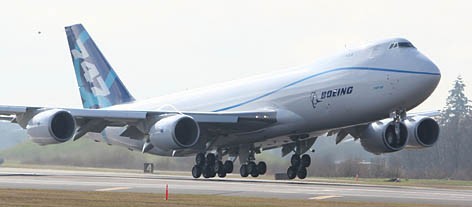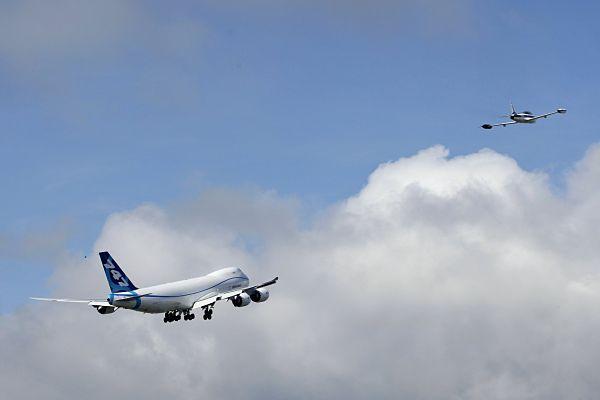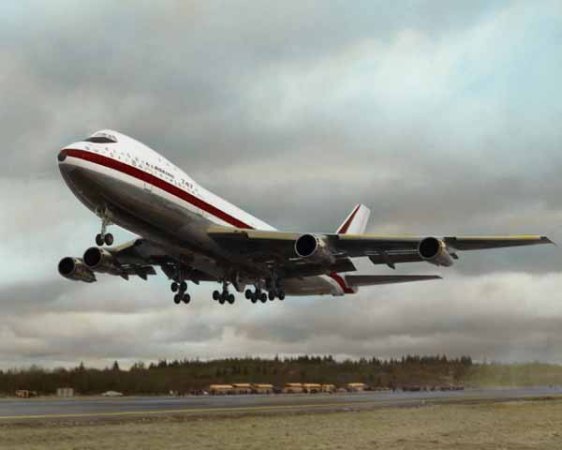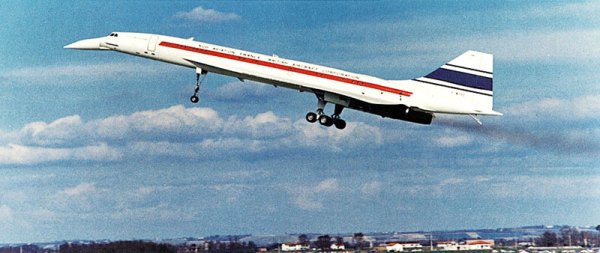
The final development of the Boeing 747 jumbo jet, the 747-8 is airborne in America on the first of its certification flights.
It is the start of the last chapter in the 747 story, which began during an intense period of technological and political rivalry between east and west, and for that matter, became a curtain raiser for today’s rivalry between the aerospace industries of America and Europe.

The 747-8F is strictly speaking the second last version of the Boeing 747 line of jumbo jets as it will be followed in perhaps a year’s time by the 748-I passenger version. It has taken off on its first flight from Everett, almost 41 years after the original 747-100 prototype took to the sky on February 9, 1969 (which falls tomorrow in America on our side of the dateline).

The 747-8F or freighter version of the family with about 76 orders will be followed (but exactly when remains unclear) by the last very last jumbo, the 747-8I passenger version, of which 32 have been ordered by Lufthansa, Korean Airlines and private individuals and governments as VIP jets.
The 747-100 prototype shown in this historic YouTube video weighed less than half as much as the latest versions, but as the engine and structural technology improved, the type became a long range as well as high capacity jet.
[youtube]https://www.youtube.com/watch?v=wKaNT88pPoQ[/youtube]
Today’s first flight by the 747-8F is expected to last around four hours. When the first 747-100 began its certification flight testing the event fell between the first manned circumlunar flight by Apollo 8 and the Apollo 11 landing, and the in same period as the Russian TU-144 and Anglo-French Concorde supersonic airliner prototypes made their first flights.
It was a time when the best remembered technological icons of the 20th century took flight (although the mushroom clouds of nuclear weapons were always the most feared symbols of those times.)
After lift off on December 21, 1968, the Apollo 8 mission became the first manned flight to escape earth’s gravity and become captured in orbit by another gravitational field, that of the moon, where from lunar orbit this image of the rising earth was broadcast.

And while it was to be five months before Apollo 11 landed on the moon, more than Apollo 8 was fresh in the minds of those who saw the first jumbo take off 41 years ago.
On December 31, 1968, the USSR flew its supersonic airliner, the TU-144, for the first time.

The ultimately more successful Anglo-French Concorde prototype didn’t fly until April 9, 1969, and at that stage, there remained a view jets that could carry 100 or more passengers at several times the speed of sound would confine the jumbo jet to a future largely linked to air freight.

Supersonic passenger flights proved to be a dead-end detour, despite the brief viability of Concorde for British Airways during the extravagant 80s. But the 747 endured as the symbol of cheaper mass transport, even as it became increasingly diluted in its relevance by twin-engined wide bodied longer range airlines from the 90s to the present.
The overlay (below) of the world’s largest aircraft is a bit fussy because of the inclusion of the Spruce Goose and a gigantic custom built Russian freighter, but allows a visual comparison of the 748 and the larger capacity Airbus A380.
The 748 is longer than the giant Airbus but narrower, and without a full twin aisle upper deck.








Crikey is committed to hosting lively discussions. Help us keep the conversation useful, interesting and welcoming. We aim to publish comments quickly in the interest of promoting robust conversation, but we’re a small team and we deploy filters to protect against legal risk. Occasionally your comment may be held up while we review, but we’re working as fast as we can to keep the conversation rolling.
The Crikey comment section is members-only content. Please subscribe to leave a comment.
The Crikey comment section is members-only content. Please login to leave a comment.